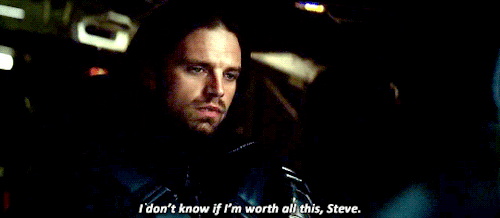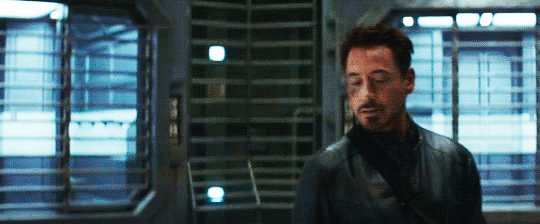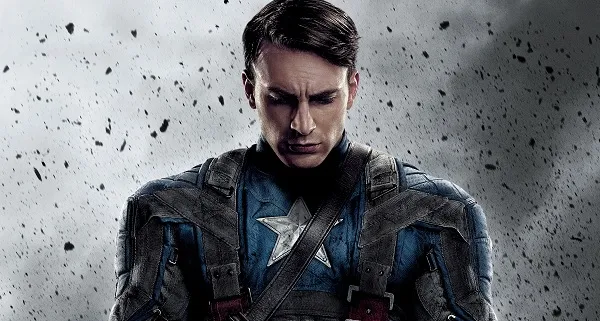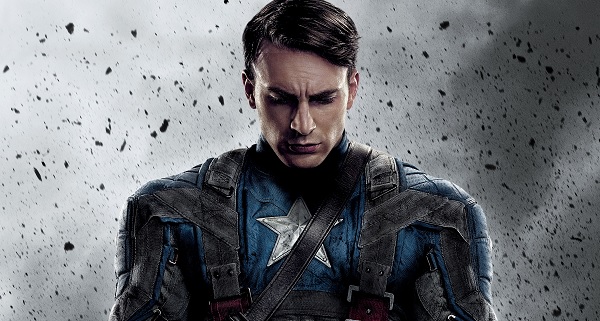The Marvel Cinematic Universe might not be the first place you look when thinking about franchises that deal with trauma and traumatized response. But what makes the MCU interesting is that it actually showcases three different types of traumatic response, and the way the protagonists deal with their trauma allows us as the audience to relate, respond, and react to their very different situations (and sometimes, the decisions they make as a result of their traumas make them harder to root for, rather than more sympathetic.)
In my analysis, I’ll be using Cathy Caruth’s general definition of trauma: “trauma describes an overwhelming experience of sudden or catastrophic events in which the response to the event occurs in the often delayed, uncontrolled repetitive appearance of hallucinations and other intrusive phenomena.” What I find so valuable about the MCU is that its films don’t try to “fix” the traumas of each character; they simply show us the trauma occurring and the consequences of how they choose to deal with their mental state. Each character is forced to confront not only the international consequences of their actions, but also the personal impact their work has on them, and we as the audience are never truly given resolution.
Editor’s note: A content warning applies to the following for frank and graphic discussion of trauma and abuse, including rape.
Steve Rogers: Saving the World, Saving a Man

via Marvel Studios/Paramount, gif via Tumblr
We in the U.S. are conditioned to root for Steve Rogers. America loves the story of the underdog who wins in the end, even when “winning” comes at a deep cost. Steve lost Bucky, crashed the Valkyrie a week later, was defrosted in 2011, and is seen fighting alongside the Avengers in the Battle of Manhattan shortly thereafter. He never even gets a full moment to really engage with his new body after his profound physical change, let alone process his subsequent staggering grief. Captain America: The Winter Soldier tries to acknowledge these changes by showing Steve’s increasing exhaustion and doubt. Sam Wilson invites Steve to group therapy at the VA office so he can talk about his experiences, but Steve doesn’t participate. It’s not that he doesn’t want to figure out his traumas, it’s that he doesn’t know if he can figure them out, or perhaps he’s suffering from a deep depression that the VA office won’t be able to penetrate. The bulk of his response to previous trauma is seen through his single-minded pursuit of Bucky Barnes. One could argue that Steve’s obsession with finding and helping Bucky is a displaced desire to find, and help, himself.
It could also be posited that Steve wants to save Bucky because it’s literally the only thing left that reminds Steve of who he really is: not the Star Spangled Man with a Plan, but Steve Rogers from Brooklyn. Bucky’s reappearance as a traumatized expert assassin in The Winter Soldier immediately triggers an emotional response that cannot be controlled, and cannot be smoothed over. Steven sees something that reminds him of home, of things familiar, and he has to get it back by any means necessary. Steve even breaks into the Smithsonian and steals his original Captain America suit, the one Bucky knows best; the subtext of this is that Bucky’s memories of Steve might be triggered by a familiar element. But Bucky’s presence triggers an emotional reaction in Steve, tied in to the enormity of what Steve has lost. After Peggy Carter’s death in Civil War, Bucky is literally the only thing left that is entirely Steve’s, and he’ll do anything to save him, even if it means getting himself killed.
Bucky Barnes: The Asset

via Marvel Studios/Paramount, gif via Bustle
The transformation of Bucky from James Buchanan Barnes to the Winter Soldier/Asset is a case study in trauma, triggers, and the complete lack of agency that comes from dehumanization. The choices made in the costume for the Winter Soldier showcase that this is a man who has had every single autonomous choice stripped away from him. In a Tumblr post, user Assetandmission writes of the outfit: “Everything about (the outfit) screams I am a wild animal that needs to be restrained. His leather jacket resembles a 1940s straitjacket. His face is muzzled so he can’t communicate well. Even his gun holster goes straight across his chest rather than across his shoulders.”
Bucky has also been mentally destabilized – over the course of 70 years, Bucky has been brainwashed, wiped, frozen, and emotionally reset multiple times in order to fulfill his duties as the Winter Soldier. He is brought out of cryofreeze specifically to assassinate. And as a pet of the government, they can do with him what they will. Bucky/The Soldier had no say in any of those decisions. What happened to Bucky, in a way, is like an asexual rape. He was violated without any consent whatsoever.
In Captain America: Civil War, this training/conditioning is further extended. We find out that HYDRA used trigger words to mentally transform Bucky into the Winter Soldier once he’s out of cryo for a mission. Bucky has spent the past two years working hard to reclaim his fractured brain, but once Baron Zemo uses the trigger words, that work is destroyed. In interviews, Sebastian Stan has talked about researching PTSD and the experiences of traumatized soldiers to prepare for the role (as well as Alzheimer’s), and how he views Bucky and the Winter Soldier as two entirely different people. This could be a commentary on how trauma, triggers and even depression can create a new personality, as if someone has installed a new hard drive to wipe out the old.
Despite the upsetting nature of the storyline, there is hope for Bucky Barnes. At the end of Civil War, he makes the choice to go back into cryofreeze until his trigger words are erased and he is mentally in a safer place. This is one of the only autonomous decisions we’ve seen Bucky make for the past two and a half movies (well, if you don’t count the plums, which incidentally are said to promote mental health and wellness). Bucky wants to control his mind autonomously once again, out of the shadows of anyone who could use him as a pet. This independent decision shows that there is indeed life after even the most brutal of violations. You can go on. (For those of you who are into the Captain America fanfiction community, there are many beautiful works on Archive of Our Own that deal with Bucky’s trauma and recovery.)
Tony Stark: Fear and Survivor’s Guilt

via Marvel Studios/Paramount, gif via Bea Reviews Things
Tony Stark is introduced in the first Iron Man film as someone deeply invested (literally) in the theater of war. But when he is abducted in Afghanistan, something changes in him. He becomes riddled with guilt over his company’s past actions and tries to fix everything by becoming Iron Man. In Iron Man 3, however, we start to see that swagger-filled persona fall apart. The Battle of Manhattan had a huge impact on Tony, and he begins suffering from panic attacks. His fear of another climactic battle leads him to build an entire fleet of suits, and his obsessive need to protect the planet (or himself) has a profound effect on his relationship with Pepper Potts.
After the battle with the Mandarin, he destroys all of his suits to please Pepper but peace doesn’t last long; he says to Steve Rogers in Civil War that he and Pepper are on a break. “I can’t stop, because the truth is, I don’t want to stop,” he admits. This inability to get rid of his patterned response to trauma is not only seen in the Avengers films, but becomes a major plot point in Civil War. Tony signs the Sokovia Accords in order to assuage his survivor’s guilt, which has grown ever larger with each adventure. He is completely incapable of seeing anyone else’s side in this matter because he is incapable of viewing himself through the lens of his own trauma, and as a result, his single-mindedness splinters the team.
Of course, Steve is on a parallel track, and his obsession with Bucky and his concept of “home” does just as much damage as Tony’s guilt and fear. They both cause the Avengers to be scattered to the winds, with neither side fully willing to admit they need assistance in navigating their trauma.
At the end of Civil War, Steve has gone rogue, Tony and Pepper’s relationship is still in question, and Bucky still hasn’t gotten his mind figured out, choosing instead to go on ice until there’s a way to deal with it. Nobody gets fixed. There isn’t really a “happy ending,” but that’s a good thing. It’s very easy to read all of this and say “Oh god, these poor boys, these cinnamon rolls too good for this world,” but as someone who does suffer from anxiety disorder and panic disorder, the fandom’s tendency to turn Bucky, Steve, and Tony into woobies is something I find extremely disturbing. These aren’t sickly sweet characters, inviting us to fantasize about fixing them. To do that diminishes the reality that so many people who have suffered from bodily and mental violation, PTSD, and other assorted traumas face; traumas are incredibly hard to reach and figure out, despite what Steve wants from Bucky and what Tony wants from his own abilities, and a snap of the fingers or a new suit or a fleet of Ultrons can’t fix what these men have been through.
The main point of that storyline at its logical conclusion in Civil War is that Steve cannot rescue Bucky, and Pepper can’t rescue Tony. It’s frightening to assume that everyone can just be “loved out of” a traumatic response, no matter how much one would want to do so. The most Bucky and Steve and Tony can do, at least in the information we get from these movies, is attempt to navigate their traumatic responses, figure out a way to make them less of a presence in their daily lives, and try to go on living as fully as they can in their present circumstances. They cannot forget their traumas, but they can learn how to live with them. It’s only then that their relationships with each other, the Avengers, their employers, and ultimately themselves will heal. And that is a message from which we can all benefit: even if you’ve been hurt, or you’re in pain, life can go on.
Alysa Auriemma is a teacher, writer, activist, geek, cosplayer, and her friend group’s feminist killjoy. Her blog, The Curious Ally Cat, has seen notice by newspapers such as the Hartford Courant and the New York Times. She is in the process of writing a series of fantasy novels for self-publication. In her spare time, she enjoys participating in community theater, solo trips to the city to see Broadway shows, really good Mexican food, and arguing with friends about which Mighty Ducks movie is the best (D2).
—The Mary Sue has a strict comment policy that forbids, but is not limited to, personal insults toward anyone, hate speech, and trolling.—
Follow The Mary Sue on Twitter, Facebook, Tumblr, Pinterest, & Google+.










Published: Jun 28, 2016 12:49 pm